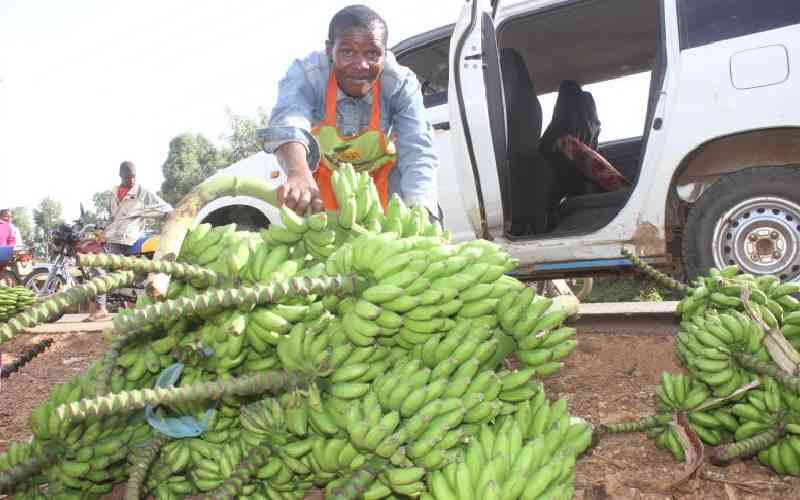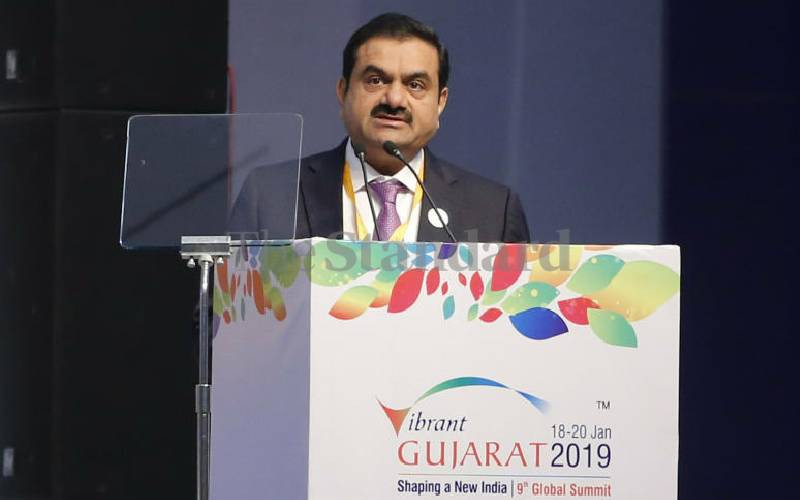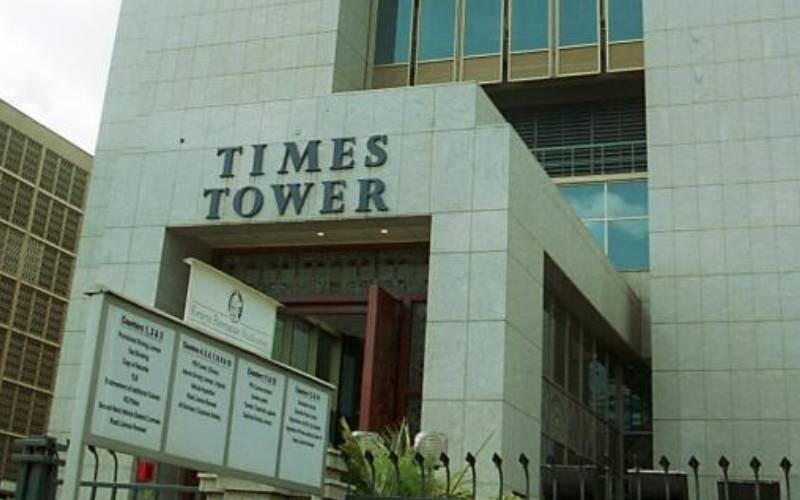
Before Mike joined Kenya Trading (EPZ) as a casual labourer in 2008, he believed that all the nice and fashionable denim jeans flaunted around were made in the United States or China or some other rich country. He was wrong.
Some of those jeans were made right here in Kenya under the Export Processing Zones (EPZ) scheme. At Kenya Trading, some raw materials such as fabric and yarn were imported, knitted into finished trousers or shorts, labeled ‘MADE IN KENYA’, packaged and shipped to New York City in US, where the firm had ready market.
He and indeed millions of other ordinary Kenyans never got an opportunity to put on brand new denim jeans he had strenuously helped make. “They were too expensive, I could not afford them,” he told Business Beat.
By 2010, the trouser went for $250 (Sh25,500 at the current exchange rate), said Mike. Quality garments and shoes made in Kenya, just as quality coffee and tea, have their markets in the rich Western countries. However, quality is expensive for the millions of the many ordinary Kenyans.
But now the Government would like ordinary Kenyans like Mike to not just be the slavish producers of these high-end garments, but to also consume them. According to Treasury Cabinet Secretary Henry Rotich, Kenyans also need to ‘acquire new clothes and shoes’ from the EPZ at affordable prices.
Thus, Rotich in his budget speech last week proposed to exempt from value-added tax (VAT) garments and leather footwear procured from EPZ. “In order to enhance the role of the scheme in growing our economy and creating employment, I have stayed the application of import duty and propose to exempt from VAT made up garments and leather footwear procured from the EPZ to enable Kenyans to acquire new clothes and shoes at affordable prices,” said Rotich.
Clearly, this is Jubilee’s anti-dote for the flooding of Kenyan market with second-hand clothes, popularly known as mitumba which have choked the country’s textile and apparent industry. However, the Government needs to do some reality checks if this initiative is to succeed.
Generally, all the about 89 enterprises operating under the EPZ scheme would love to sell directly to Kenyans. It would reduce some of their over-head costs such as freight and logistics. But expecting to sell a pair of trouser at even Sh10,000, after exempting it from 16 per cent VAT, in a country where gross national income (GNI) per capita is Sh139,972 (about Sh11,664 income per month) is a kin to the proverbial exercise of trying to get water from a stone.
The Kenyan apparel market is not as lucrative as the $83 billion (Sh8.39 trillion) US market for clothes and shoes. And most factories under the EPZ scheme know this. Kenya is among the 42 countries in Sub-Saharan Africa benefitting from the African Growth and Opportunity Act (Agoa), a trade agreement between these countries and the US to give firms from these African countries duty free, quota free access to the United States.
Apparel exports to the US increased from $8.5 million (Sh867 million) in 2000 to $332 million (Sh33.9 billion) in 2014. In 2015, the exports increased by 14.4 per cent to Sh34.6 billion, according to figures from the Economic Survey 2016.
New York consumers
Agoa-related factories employed about 41,548 in 2015. This was an increase from 37,785 those employed under the Agoa arrangement in 2014. Non-Agoa sales were Sh25.7 billion in 2015, taking the country’s total foreign sales to Sh60.3 billion in 2015, a 17.4 per cent increase from Sh51.4 billion in 2014.
On the other hand, domestic sales that Rotich is keen to boost, declined sharply by 34.8 per cent from Sh5.8 billion in 2014 to Sh3.8 billion in 2015. Even worse is that domestic sales included purchases by foreigners through the duty free shops at our airports.
Moreover, it is not a given fact that exempting 16 per cent VAT from ‘made up garments and shoes’ procured from EPZ will ease the cost of the product. If anything, it could be counter-productive to the manufacturer, according to audit firm PWC. The firm noted in its post-budget briefing that because products exempted from VAT are not taxable, manufacturers cannot add VAT cost of some inputs used in the manufacture the product.
Stay informed. Subscribe to our newsletter
Thus, manufacturers are unable to pass on to the consumers the VAT cost of inputs. And apparently, most of the inputs used in the manufacture of quality textile and apparel products are imported. In 2015, for example, imports which included inputs, equipment and machinery amounted to Sh30.6 billion.
The Sh25,000 price that Mike’s employer charged New York consumers did not just include the cost of materials, it also included the cost of labour, transport, power and, of course the trader’s profit margin. According to American consulting firm McKinsey & Company, lack of local upstream industry has forced manufacturers of textile in Kenya to import fabrics. This has resulted to high lead times with fabrics from overseas taking up to 40 days to find their way through the customs to a garment factory in Kenya.
Also, with a fledgling cotton industry (which Rotich never touched in his entire speech), there is just not enough raw materials available locally for the textile industry. Thus the country is forced to import raw materials unlike their key Asian, and increasingly East African competitors.
According to the World Bank, Asian competitors such as China and Bangladesh and regional competitors such as Ethiopia and Uganda have expanded their efforts to increase the availability of locally produced fabrics.
“Kenyan companies continue to rely on high cost imported material, pushing a number of EPZ companies (particularly factories operating in Kenya as a subsidiary of a larger apparel company outside Kenya) to move away from purchasing their own materials to primarily doing simple cut-and-make (CM) contract labor where buyers supply a design and all materials,” noted the 2015 World Bank report commissioned by the Ministry of Industrialisation to diagnose the textile and apparel industry in Kenya.
“This practice is leading to value attrition, further lowering the revenue generating potential for Kenyan firms and postponing needed efforts to source locally available material to help reduce the cost and time of apparel production,” the report added.
The cost of power is also a turn-off for most investors in this sector. For textile firms in Kenya, the cost of power was at over 20 cents per kWh in 2014, according to the World Bank. This was too prohibitive when compared to China’s and Ethiopia’s at seven cents per kWh and six cents per kWh respectively.
Closed shop
Power costs account for up to 25 per cent of Kenyan textile firms’ operating costs. The fact that some of these firms use very old machines, as old as 38 years, which draw upon more power for their output than the more modern equipment only make things worse, according to the McKinsey.
Labour productivity is also an issue. Sewing operators’ wages in Kenya average $180 (Sh18,360) per month compared to $60 (Sh6,120) in Ethiopia. The high cost of production for textile mills has not just seen most Kenyans resort to either new but poor quality clothes, consumers have also gone for the better quality second hand clothes.
A second hand pair of jeans from Gikomba market in Nairobi can go for as little as Sh500. Indeed, Mike remembers, there were times when he could go shopping for a pair of jeans trouser in Gikomba only to bump into one of Kenya Trading’s jeans.
The high cost of production has also seen some manufacturing firms, even those under the EPZ. In the case of Kenya Trading (EPZ) Limited thing go so thick that in 2010, the company closed its Kenyan factory rendering Mike, then a husband and father of one, jobless.
—[email protected]
 The Standard Group Plc is a
multi-media organization with investments in media platforms spanning newspaper
print operations, television, radio broadcasting, digital and online services. The
Standard Group is recognized as a leading multi-media house in Kenya with a key
influence in matters of national and international interest.
The Standard Group Plc is a
multi-media organization with investments in media platforms spanning newspaper
print operations, television, radio broadcasting, digital and online services. The
Standard Group is recognized as a leading multi-media house in Kenya with a key
influence in matters of national and international interest.
 The Standard Group Plc is a
multi-media organization with investments in media platforms spanning newspaper
print operations, television, radio broadcasting, digital and online services. The
Standard Group is recognized as a leading multi-media house in Kenya with a key
influence in matters of national and international interest.
The Standard Group Plc is a
multi-media organization with investments in media platforms spanning newspaper
print operations, television, radio broadcasting, digital and online services. The
Standard Group is recognized as a leading multi-media house in Kenya with a key
influence in matters of national and international interest.










